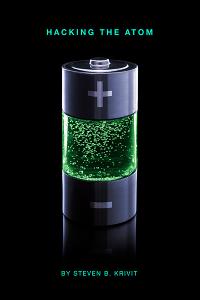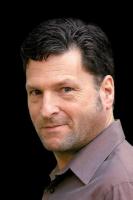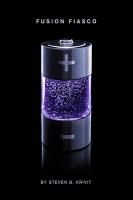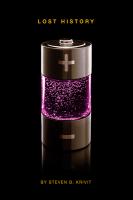Krivit: Explorations in Nuclear Research
The new science of low-energy nuclear reactions (1990-2015)
FUSION FIASCO: EXPLORATIONS IN NUCLEAR RESEARCH, VOL. 2
The behind-the-scenes story of the 1989-1990 fusion fiasco
LOST HISTORY: EXPLORATIONS IN NUCLEAR RESEARCH, VOL. 3
A precursor to modern research in low-energy nuclear reactions (1912-1927)
Steven B. Krivit
Pacific Oaks Press, 2016, Hardbacks, $48; paperbacks, $16,
Kindle & ePub, $3.99
Vol. 1: ISBN-10, 0996886443; ISBN-13, 978-0-996886444
Vol. 2: ISBN-10, 0976054558; ISBN-13, 978-0-976054559
Vol. 3: ISBN-10, 0996886400; ISBN-13, 978-0-996886406
Krivit reports:
My adventure started in 2000, when I began covering the topic of low-energy nuclear reactions and reporting my findings through New Energy Times. I reported on the work of credentialed scientists who claimed that they had found experimental evidence of "cold fusion." Initially, I took them at their word. Since the fusion furor erupted in 1989, nearly every science writer had assumed that the research lacked scientific credibility. But I came to the subject without preconceptions. By 2008, I had identified experimental facts that disproved the erroneous "cold fusion" hypothesis, but, clearly something nuclear, and something previously unexplained, was there. In 2012, I decided to summarize what I'd learned and wrote Hacking the Atom.
During that process, physicist Richard Garwin loaned me 5,000 pages of documents, most of which were internal Department of Energy review panel reports that had remained out of sight for two decades. These documents and other original source material I unearthed revealed the extensive behind-the-scenes activity and the real story of what occurred in 1989. This became a separate book, Fusion Fiasco. I also stumbled on a major period of atomic transmutation research that occurred during the 1910s and 1920s that had been unexplained and largely forgotten for 60 years. That also became a separate book, Lost History.Writing about an emerging field of science is difficult and frustrating. I was certain that no publisher would be willing to risk publishing a book, let alone a trilogy, on a controversial new topic in physics and chemistry without validation from independent reviewers. I also knew that many scientists active in the field would not take keenly to my reporting of the unscientific behavior of their peers. Self-publishing was the most viable path.
I wrote the books from 2012 to 2016, entirely self-funded. I had outstanding support from my editing and graphics team, three of whom generously volunteered their expertise and encouragement throughout the laborious process. The volunteers had been readers of my work for many years, and have backgrounds in science and technology. I learned the invaluable benefit of working in parallel with different editors who each brought critical and useful suggestions to the project. I also learned the importance of working with a professional indexer, not only to enhance the books, but also to catch potential errors and inconsistencies.Contact info:
- Steven B. Krivit, 415 295-7801, steven3@newenergytimes.com
- Book website: http://stevenbkrivit.com/contact-steven/
- News website: http://news.newenergytimes.net/
NASW members: will your book be published soon? Take advantage of this opportunity for shameless self-promotion. Submit your report for Advance Copy.
Tell your fellow NASW members how you came up with the idea for your book, developed a proposal, found an agent and publisher, funded and conducted research, and put the book together. Include what you wish you had known before you began working on your book, or had done differently.
See https://www.nasw.org/advance-copy-submission-guidelines.
Thinking of writing a book? If you are a NASW member, you may access a list of more than 150 books and online resources to help you craft your book proposal, find an agent and funding sources, negotiate your contract, learn about self-publishing, publicize and market your book, and more at https://www.nasw.org/article/write-book.
Send book info and questions about book publishing to Lynne Lamberg, NASW book editor, llamberg@nasw.org.







